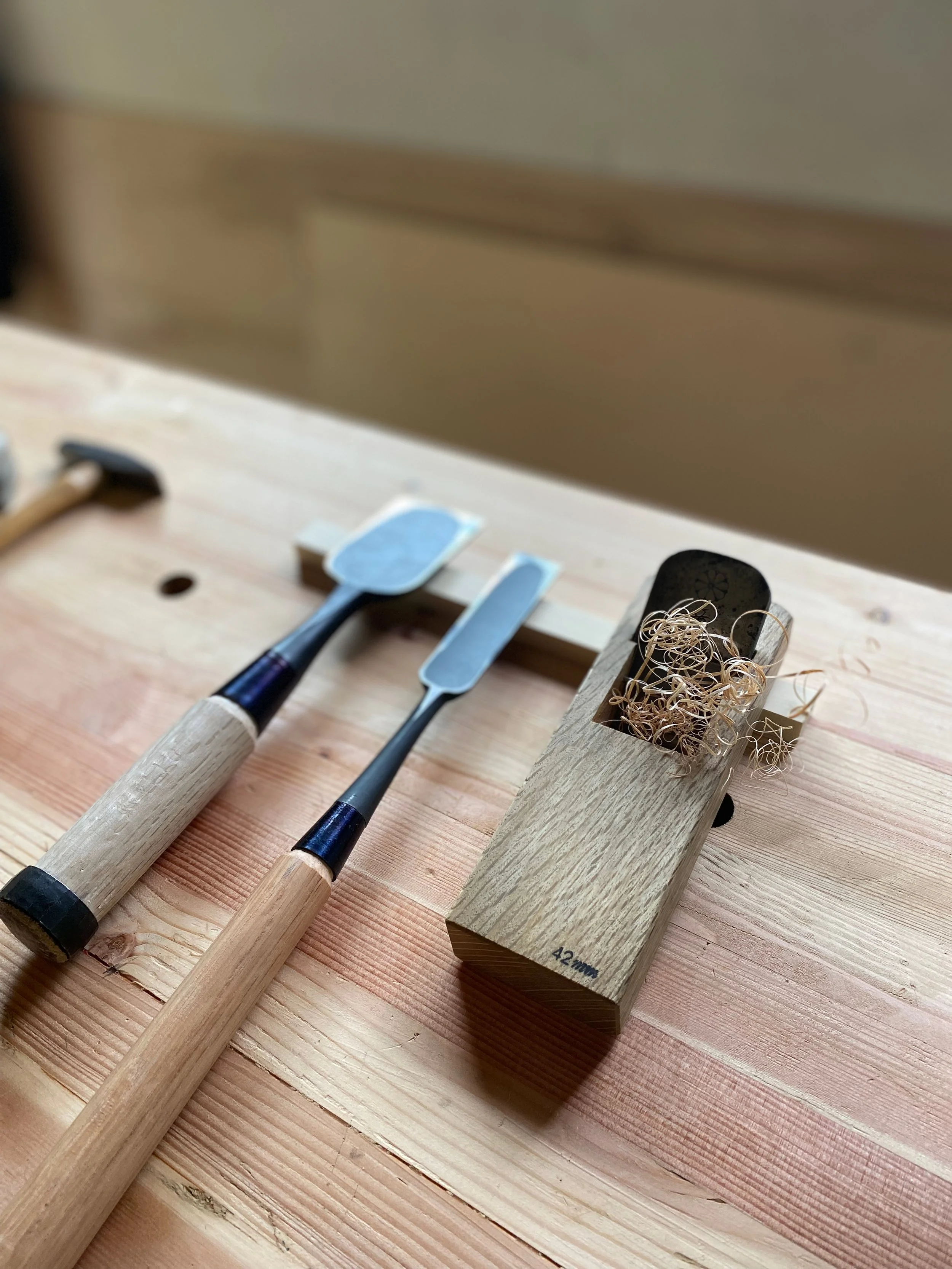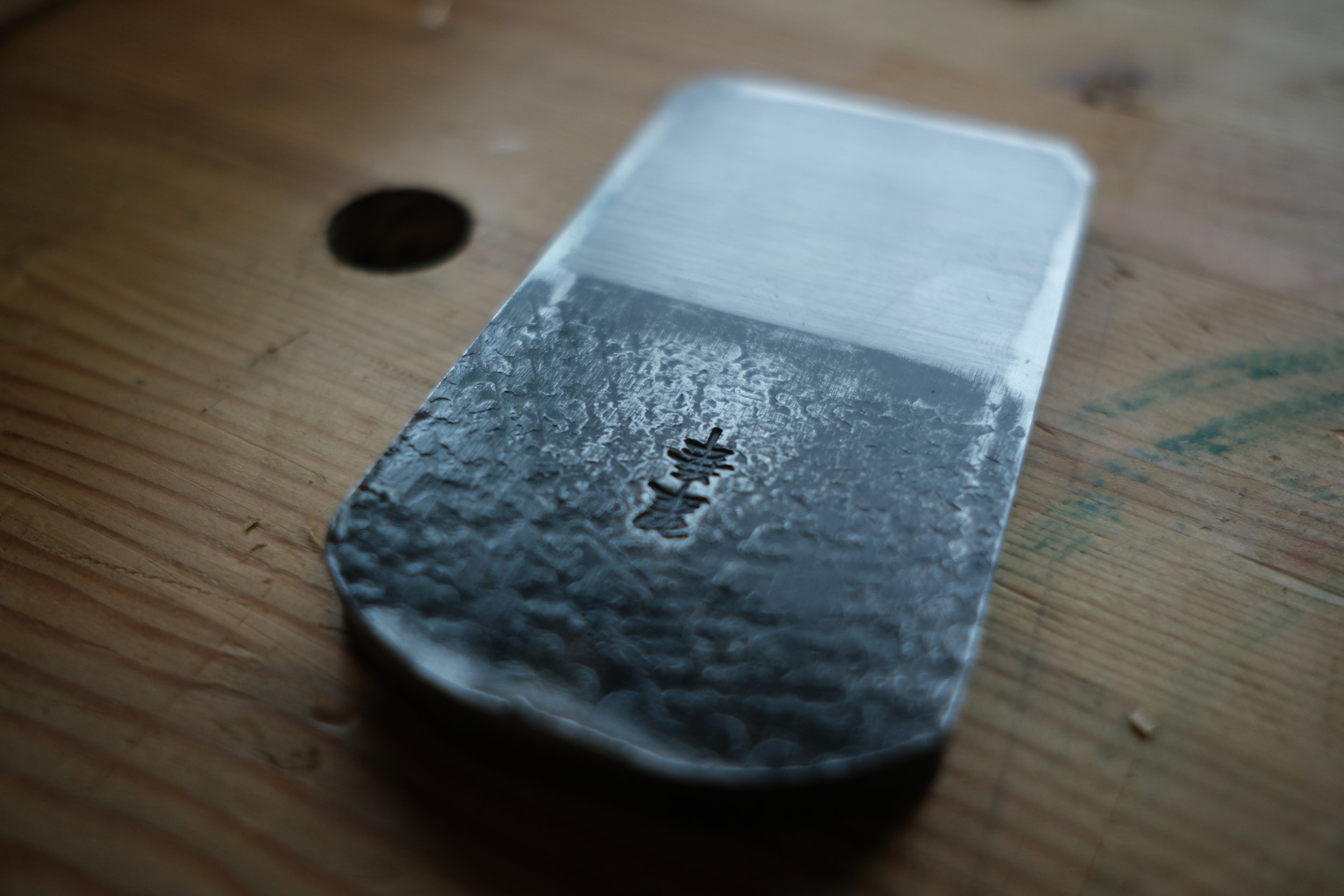Japanese Hand Tools: Sharpening and Plane Setup
Weekend Class, For Beginners
Summer 2024
July 27-28
In this weekend class, we'll start by tuning up your water stones. Then learn basic setup and sharpening techniques on your own chisel. We cover removing and resetting the handle, fitting the handle ring, preparing the back, dealing with the hollow ground, blade angles and subtleties of honing with Japanese water stones. Sharpening is done by hand with no guides in the traditional manner.
Next, we move into the hand plane, first learning to flatten the back using the "Uradashi" technique of forming the blade with a hammer and anvil. Then honing on a steel plate for perfect accuracy. Finish sharpening and trimming the blade as necessary. Next, the chip breaker is carefully shaped, honed, and fit to the main blade. With the blades ready, the block is trimmed as needed and fit with the blades. A scraper plane can then be set up and used to shape the plane base to the proper contours. Finally, learn how to micro-adjust the blade settings and make shavings!
In summary, this class will give you the fundamentals for setting up and using Japanese hand tools to then use on whatever projects you undertake at home. This class is a prerequisite to the "Japanese Joinery" class.
Tools
It is wise to start early procuring these tools. Please see the Greeting Letter for more information.
Required:
Chisels: 1 new Japanese chisel. Any size is OK, medium width is recommended (12mm to 36mm). Optional: If you have a 1/8” (3mm) chisel of any type, please bring it.
Hand planes: 1 new Japanese smoothing plane at least 50mm wide. The plane should have a laminated steel chip breaker. 70mm is standard and most useful, but a high quality narrower plane can often be gotten for less money. Western planes can be substituted, but less will be learned.
1 Japanese scraper plane (tachiganna) any size. If you have a choice of sizes, wide is recommended. Note: this is an actual plane with a wooden block, not a hand held blade.
Sharpening Stones: At least 1 medium (1000~1500 grit) and 1 finish stone (minimum 6000 grit). Double sided combination stones are not recommended. Optional: 1 course stone (220~600 grit).
220 grit wet dry sandpaper- at least 2 or 3 sheets.
Hammers: 1 small size 150~250g. Any style, but an octagonal head is most useful. Optional: 1 larger hammer or mallet.
Miscellaneous: Pencil, layout square, 1 straight edge (ideally beveled machinist style minimum 12” long), a small round or ½ round metal file.
Recommended:
Steel Plate (kanaban): These will be provided, but feel free to bring yours if you have one.
Small water bucket. There will be extras to use.
If you are driving and have room, please bring other hand tools that you would normally use.
Prerequisites
For beginners.
Class Information and Registration
Class runs from 9:00 am to 5:00 pm on Saturday and Sunday in Building 315 at Fort Worden. Map
Please read our What to Expect page for general information about the school.
Please also read our Registration Policy.
Sign up for the waitlist if the course is full.
Class size: 10
Cost: $375
Materials Charge: $25






Japanese Carpentry
Seattle, WA